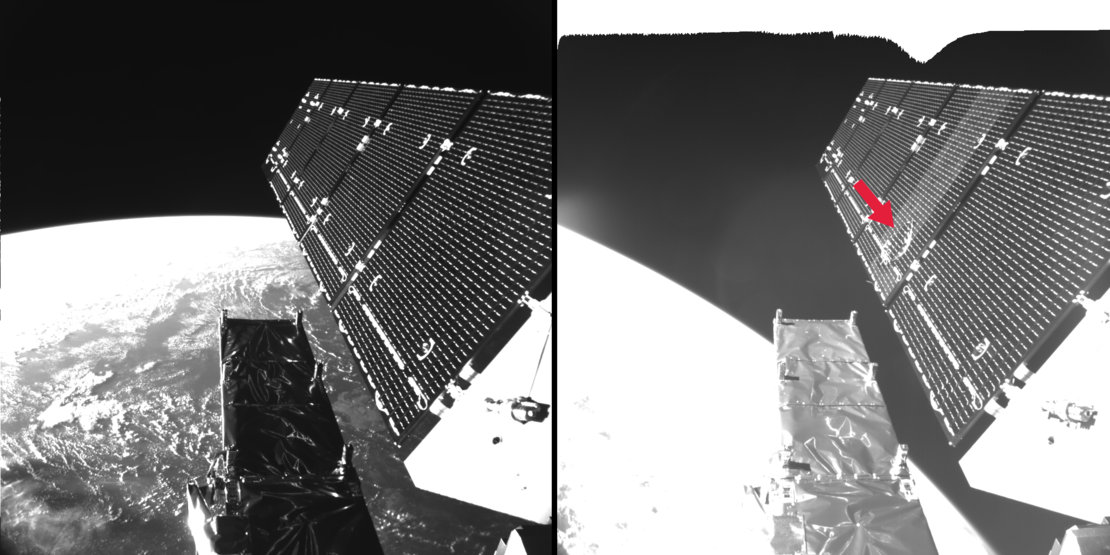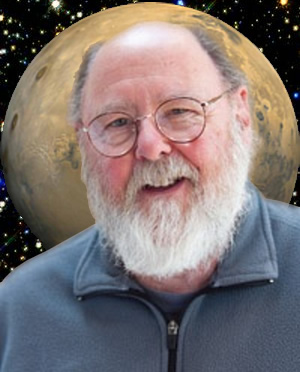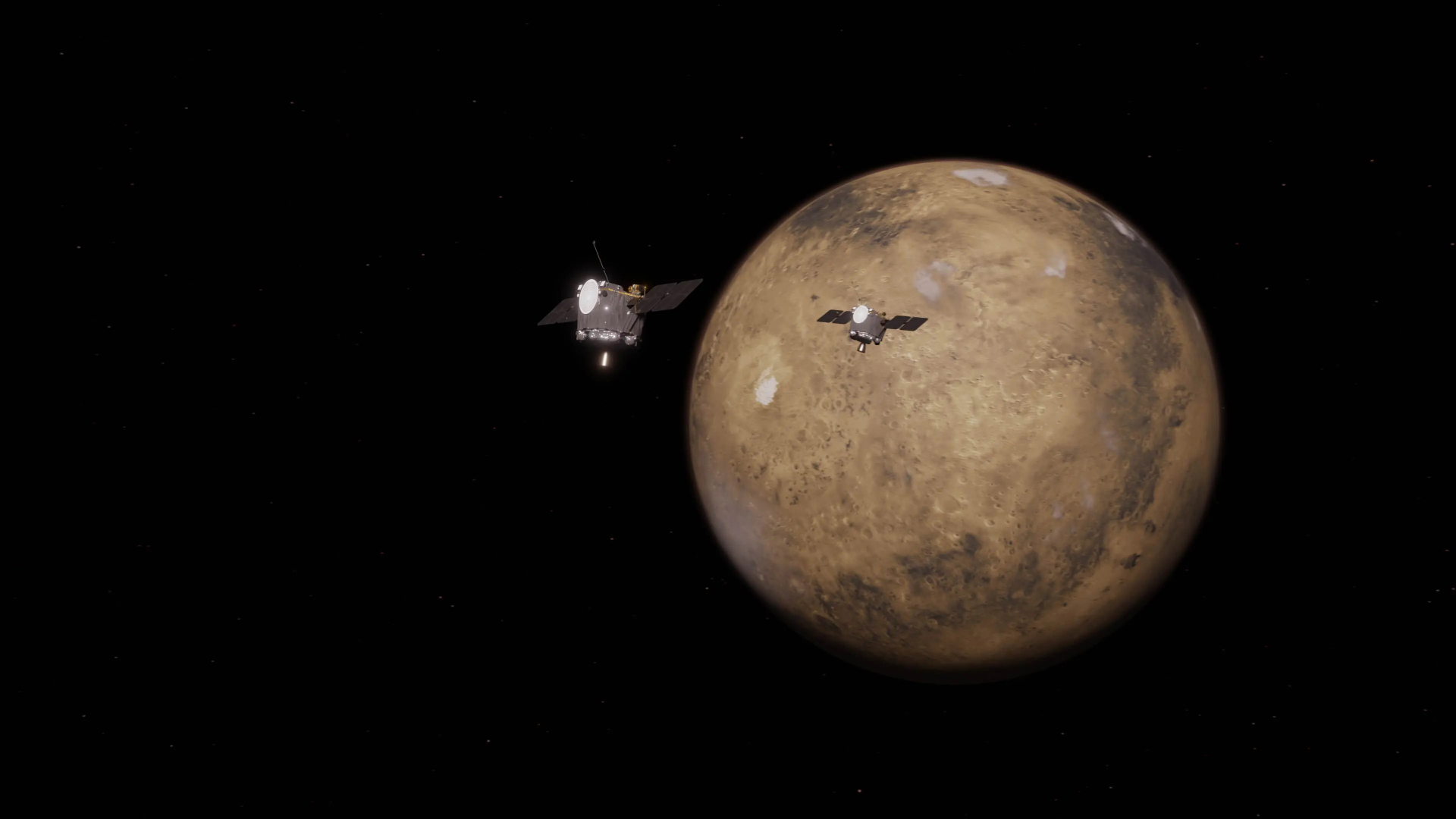European Satellite Hit by Space Particle (Photos, Video)

European Space Agency (ESA) engineers reported today (Aug. 31) that a solar panel on the Copernicus Sentinel-1A satellite was hit by a millimeter-size particle in orbit on Aug. 23.
The strike produced a sudden small power reduction and slight changes in the orientation and the orbit of the satellite. You can see our video overview of the space particle strike here.
"Following a preliminary investigation, the operations team at ESA's control center in Darmstadt, Germany suspected a possible impact by space debris or micrometeoroid on the solar wing," according to an ESA statement.
Engineers decided to activate the cameras onboard the spacecraft to acquire pictures of the array. These cameras were originally carried to monitor the deployment of the satellite’s solar wings just a few hours after launch in April 2014, and were not intended to be used afterwards.
Following their switch-on, one camera provided a picture that clearly shows the strike on the solar panel.
"Analysis continues to obtain indications on whether the origin of the object was natural or man-made. The pictures of the affected area show a diameter of roughly 40 centimeters [16 inches] created on the solar array structure, confirming an impact from the back side, as suggested by the satellite’s attitude rate readings," Holger Krag, head of the Space Debris Office at ESA’s establishment in Darmstadt, Germany, said in the same statement.
This event has no effect on the satellite’s routine operations, which continue normally, ESA stated.
Breaking space news, the latest updates on rocket launches, skywatching events and more!
The two Sentinel-1 satellites, part of the European Union’s Copernicus Program, are operated by ESA on behalf of the European Commission. The spacecraft help scientists monitor a variety of processes and activities on Earth.
Leonard David is author of "Mars: Our Future on the Red Planet," to be published by National Geographic this October. The book is a companion to the National Geographic Channel six-part series coming in November. A longtime writer for Space.com, David has been reporting on the space industry for more than five decades. Follow us @Spacedotcom, Facebook or Google+. Originally published on Space.com.

Leonard David is an award-winning space journalist who has been reporting on space activities for more than 50 years. Currently writing as Space.com's Space Insider Columnist among his other projects, Leonard has authored numerous books on space exploration, Mars missions and more, with his latest being "Moon Rush: The New Space Race" published in 2019 by National Geographic. He also wrote "Mars: Our Future on the Red Planet" released in 2016 by National Geographic. Leonard has served as a correspondent for SpaceNews, Scientific American and Aerospace America for the AIAA. He has received many awards, including the first Ordway Award for Sustained Excellence in Spaceflight History in 2015 at the AAS Wernher von Braun Memorial Symposium. You can find out Leonard's latest project at his website and on Twitter.
